Civil War Weather: The Regular Army and the Weather
On February 9, 1870, President Ulysses S. Grant signed a bill into law establishing a meteorological division with the United States Army’s Signal Service (specifically, the Division of Telegrams and Reports for the Benefit of Commerce). Though not a direct result of the American Civil War, this new bureau joined myriad other post-war initiatives that sought to invigorate the professional army of the United States as it adjusted to the postbellum world. The first three army officers to oversee the new initiative were Albert J. Myer, William B. Hazen, and Adolphus Greely– all Civil War veterans with an interest in technology, exploration, and science.
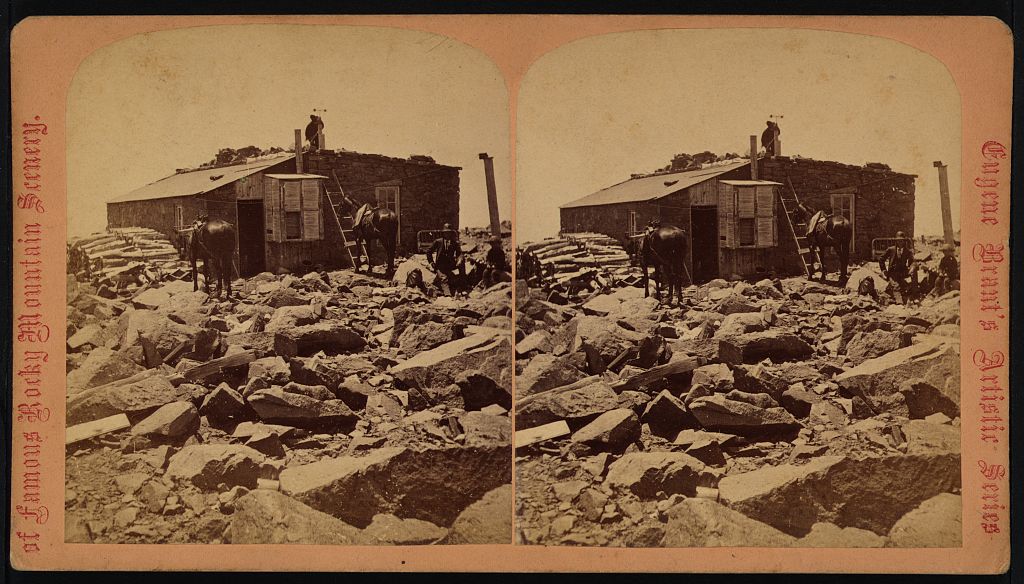
The work of the meteorological arm of the new-look United States Army sparked public interest. For an institution that was often ignored by the public — as evidenced by one Eastern socialite who supposedly exclaimed upon meeting a soldier in 1880s New York “I thought the army was all disbanded after the war!” — the army’s work in learning how to predict the weather received positive notices.
To modern readers, who daily deal with the imperfect science of weather forecasting, the hope expressed by the postbellum press that army weather measurements would make predicting the weather an exact science can seem laughable. But they were also genuine, reflecting a widespread feeling that with the nation reunited and progress being made on a number of national projects, the transcontinental railroad chief among them, the reborn Union stood to lead the way in pioneering a new field. Understanding the science of weather would increase commerce, travel, and industry, Americans believed. And as the Washington Chronicle put it, most expected the army’s work in the new field to be “a blessing, in more ways than one.” [1]
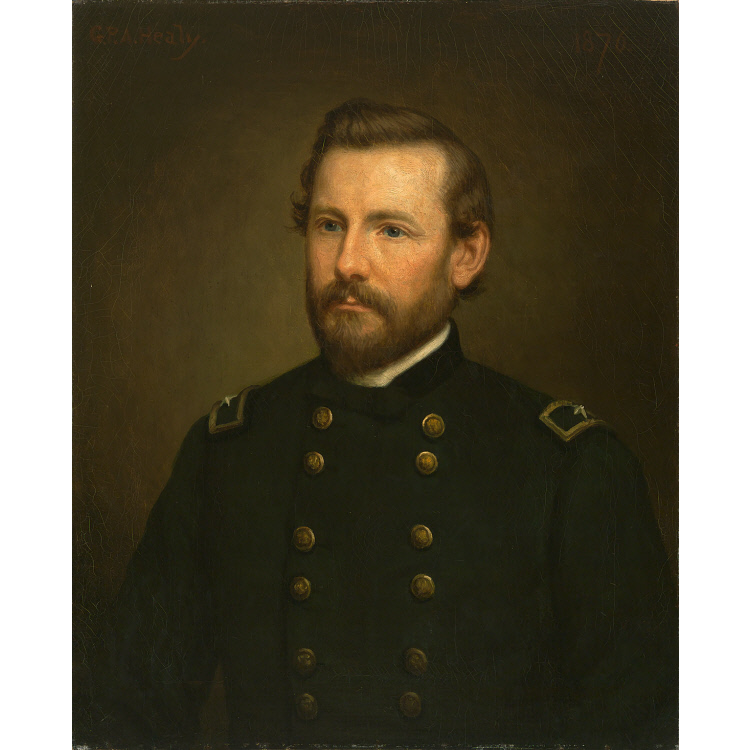
Other periodicals called the new weather prediction system “a guaranty of Democratic progress.” [2] The National Grange, an organization representing the interests of the nation’s farmers and agriculturalists enquired Congress as to whether a network could be established for forwarding the army’s weather reports directly to farmers, so that they could better decide when to plant and harvest their crops, or if they might expect drought or deluge. The Chicago Post affirmed that “among all the improvements of modern times probably none will work more important results than these weather signals.” [3]
The army’s meteorologists produced maps daily, which grew in accuracy and detail as more signal stations were established across the country. Maps showed atmospheric conditions, anticipated precipitation, temperature, and wind directions. Annual reports, meanwhile, compiled high and low temperatures for each station — showing that temperatures in the streets of Laredo, Texas soared far higher than those in Bismarck, ND, where frigid cold defined much of the year. The Philadelphia signal station reported that on July 4, 1876, temperatures reached 94 degrees for attendees at the Centennial Exposition.
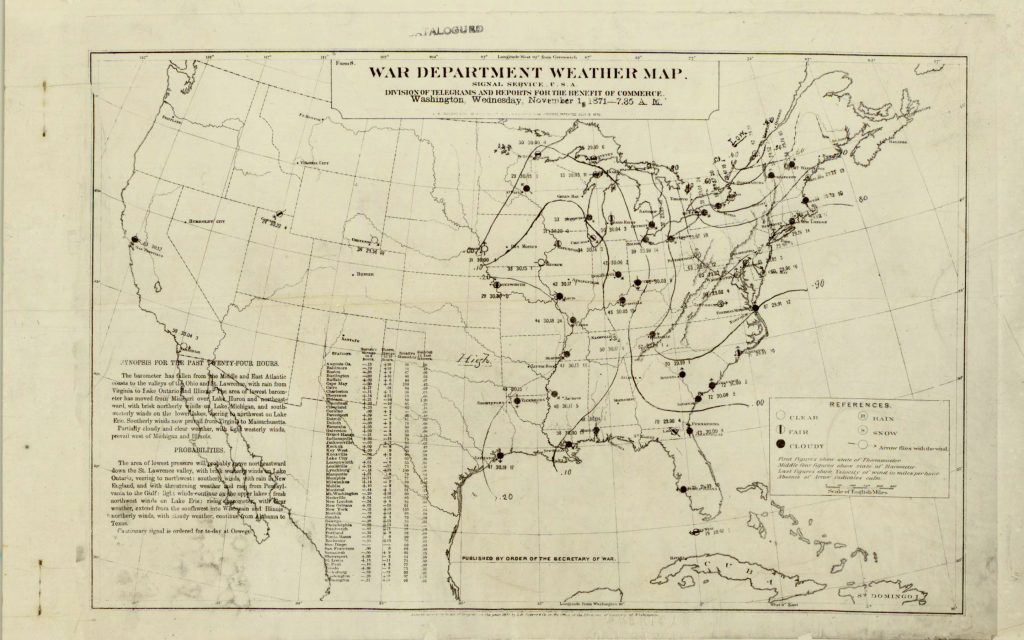
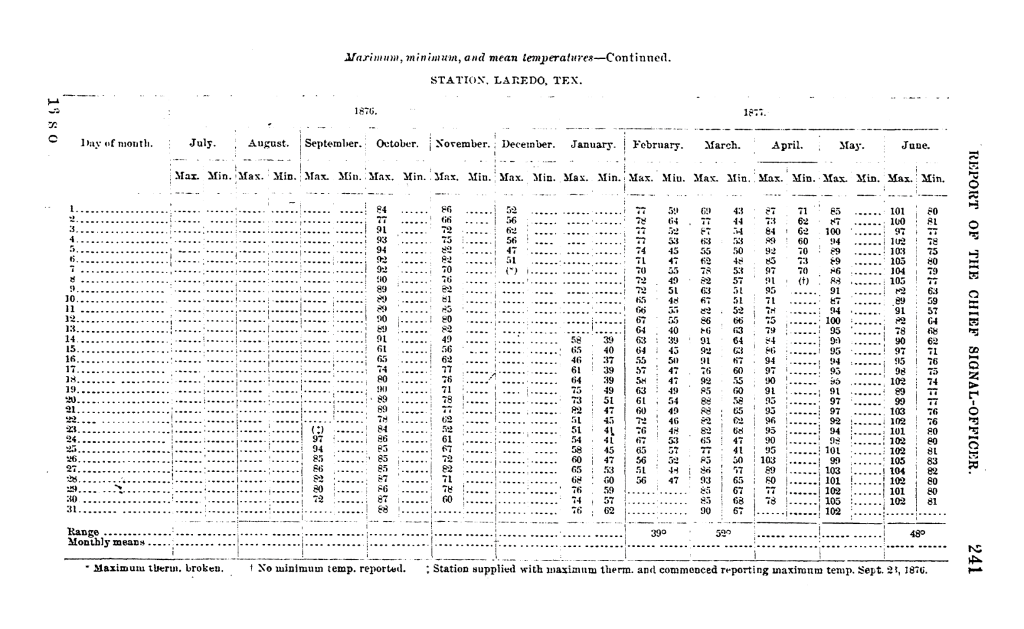
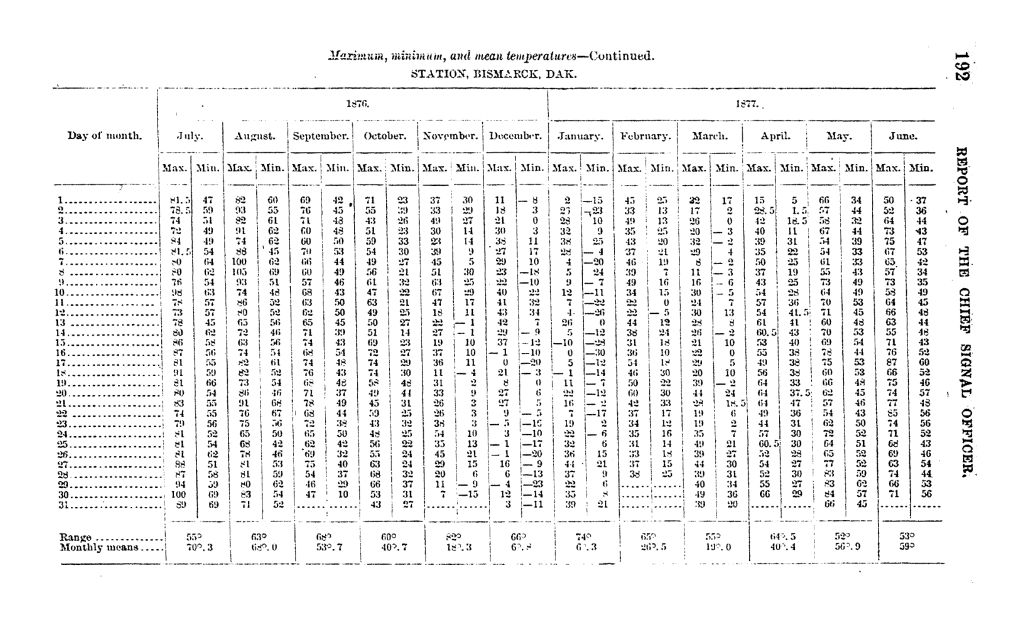
I first encountered the vast collection of meteorological data compiled by the army in the research for my current book project — a political history of the US Regulars in the Civil War era — and found myself drawn to the materials, but uncertain as to how to use them in my story. More than anything, I think the army’s interest in the developing science of weather demonstrated an effort to remain relevant and useful to the country, to earn their keep, as it were. The army needed to do this, in part, so that congressmen might be less inclined to train their budgetary scythe on the organization’s annual budget, which fell year over year after the end of the Civil War.
The weather work also built on the professional army’s longstanding role as the exploratory and scientific arm of the federal government. After the Civil War, with less to explore and map than in the antebellum years, the same energy could be oriented toward furthering science in new fields. Emerging victorious from the Civil War also seems to have spurred army leadership to pursue programs that would keep their force on the cutting edge of technology and science, so that they could keep pace with the much larger and better-funded armies of nations across Europe.
Further recovering and chronicling the army’s role in the development of meteorology would make an excellent project for anyone interested in histories of politics, science, military power, technology, or the environment. And, at the end of the day, the story offers a reminder that despite its small stature, the professional army played a fundamental role in the development of the nineteenth-century United States.
[1] The Washington Chronicle (Washington, DC), July 3, 1871.
[2] The Daily Patriot (Washington, DC), May 4, 1871.
[3] The Chicago Post, May 5, 1871.
If you consider USMA as the first, or one of the first, engineering schools then it seems reasonable to map weather into an engineering problem. The topogs certainly demonstrated the army’s role as tool for civilian infrastructure (not just physical as in lighthouses but also scientific data-driven like coast survey and geodesy). Topogs I guess seemed an unaffordable luxury during wartime but its easy to see that capability being transferred into signals, just as aeronautics would be at a later date. You see much the same thing in navy later as regards radio.
Certainly! And in some of their literature the US Army took great pride in the fact that they were the first army to cooperate and take simultaneous weather readings with the US Navy; making the US the first country to combine the expertise of those two branches to better understand a scientific problem!
Well! I spy a book in the making! Maybe when everyone finishes up current projects we should all talk–everyone who contributes to this fine topic is cordially invited. I will host.
Huzzah!!